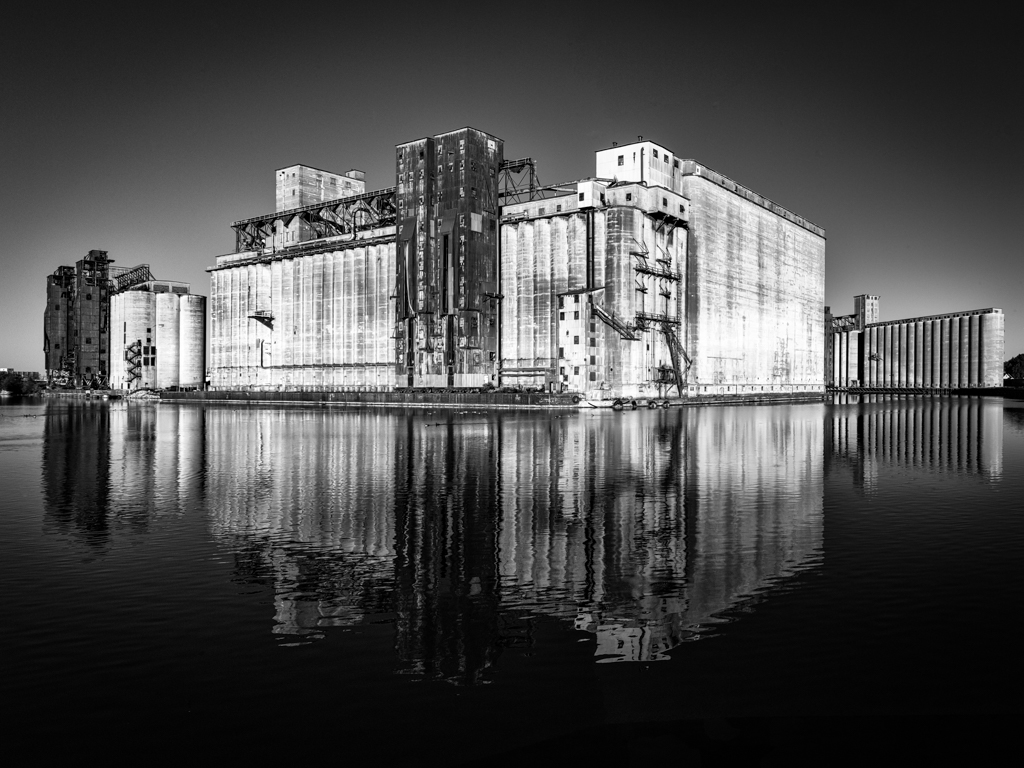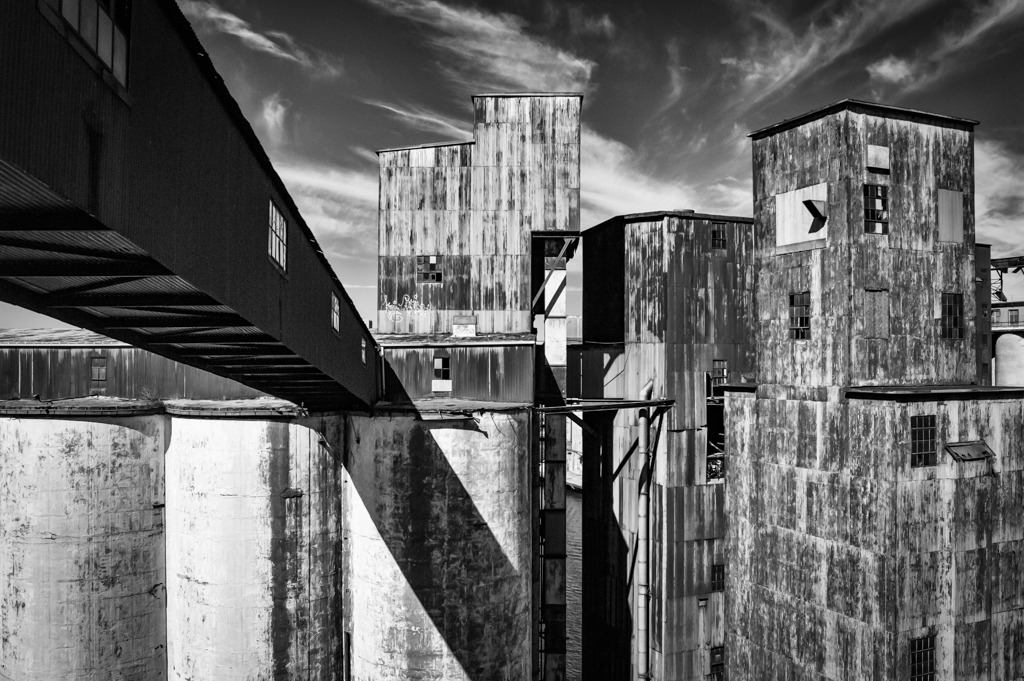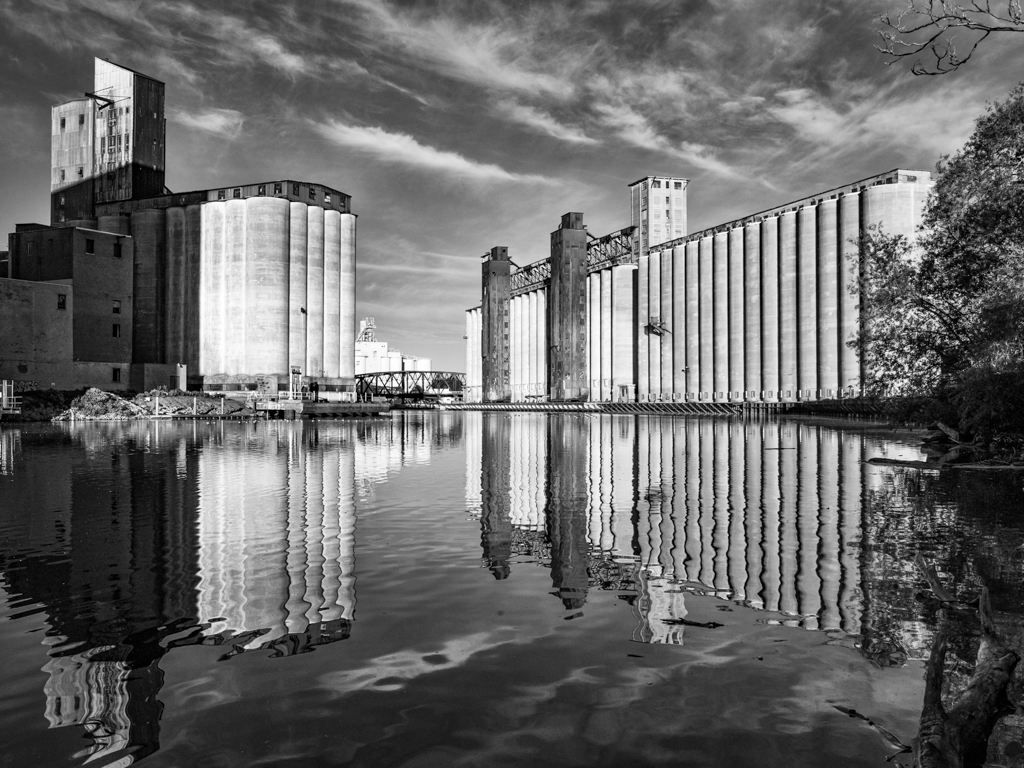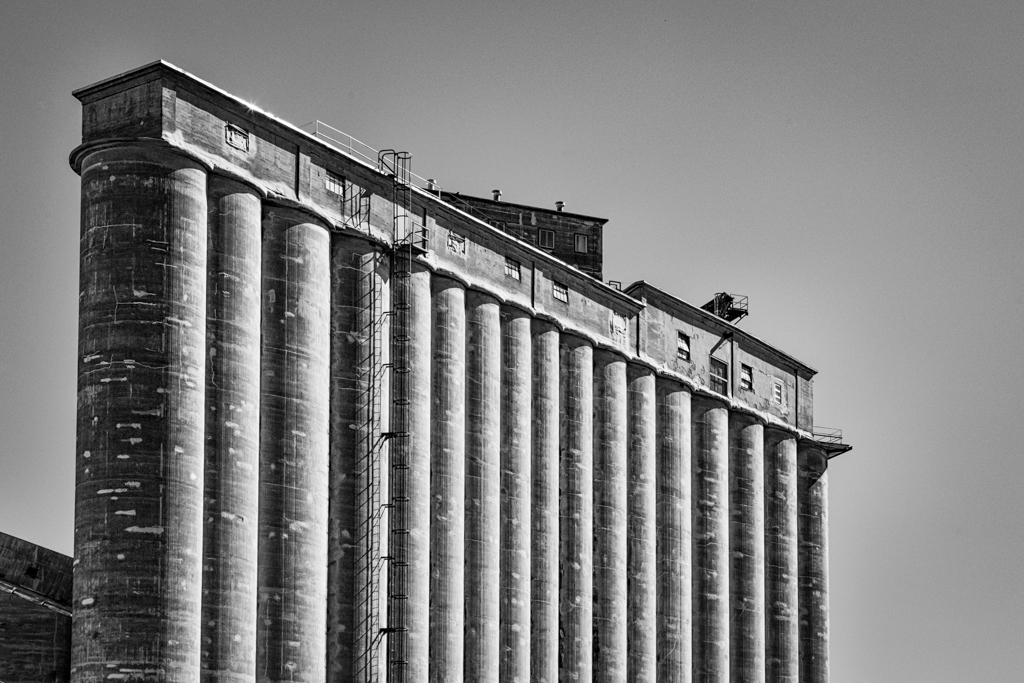honorable mention
John Eaton Eaton united states
title
Concrete Atlantis
In 1906, Buffalo’s first tall (~125’) cylindrical grain-silos were constructed along the Buffalo river using slip-formed reinforced concrete -- a major innovation: easy and quick to construct, strong and, above all, fire-proof – followed by more than 40 more in the next three decades.
At the time European architects cited these monumental edifices as key examples of modernist functional design. In 1913, Walter Gropius published a series of images of Buffalo’s grain elevators and daylight factories, sparking international interest. These were reproduced by Le Corbusier, and recaptured by the German architect Erich Mendelsohn, who visited Buffalo in 1924 specifically to photograph and draw the grain elevators at first-hand.
Today the grain-silo’s dramatic, austere form against the skyline remains as a tribute to the importance of Buffalo in America’s industrial heritage and the development of modern functional architecture.
“ in abandonment and death they evoke the majesties of a departed civilization”; Reyner Banham, ‘A Concrete Atlantis’, 1986.
Biography
Born and raised in England, but living in California since the late 1980’s, my photographic skills are self-taught through decades of patience and practice. The potential of black and white photography first enthralled and excited me as a teenager when my father lent me his Kodak fold-out camera to take on a school trip to Brussels and Paris . I bought my first camera in 1966 (a used twin-lens Yashica), followed by a succession of various 35mm and medium-format film cameras -- today I use digital rangefinder cameras.
I’m energized in exploring images of what I see around me, especially architecture and landscape (the interest in architecture comes from the rest of my family -- my father, brother and son are all architects). I’m fascinated by the form and function of buildings that men and women create and equally by the infinite forms that nature creates.
Ever since that first experience back in 1958, black and white photography has always been my first love -- the simplicity, elegance, drama, timeliness and richness that it can bring to an image for me drives a more visceral response. I’m excited by the emotional ‘punch’ that black and white images bring in this particular context – the contrasts between light and dark, areas of luminance and tonality, and the abstractions of shapes and forms -- that “special” quality that heightens the emotion and impact of the image.
www.johneatonphotography.com
www.englishmedievalcathedrals.com
back to gallery
entry description
Concrete AtlantisIn 1906, Buffalo’s first tall (~125’) cylindrical grain-silos were constructed along the Buffalo river using slip-formed reinforced concrete -- a major innovation: easy and quick to construct, strong and, above all, fire-proof – followed by more than 40 more in the next three decades.
At the time European architects cited these monumental edifices as key examples of modernist functional design. In 1913, Walter Gropius published a series of images of Buffalo’s grain elevators and daylight factories, sparking international interest. These were reproduced by Le Corbusier, and recaptured by the German architect Erich Mendelsohn, who visited Buffalo in 1924 specifically to photograph and draw the grain elevators at first-hand.
Today the grain-silo’s dramatic, austere form against the skyline remains as a tribute to the importance of Buffalo in America’s industrial heritage and the development of modern functional architecture.
“ in abandonment and death they evoke the majesties of a departed civilization”; Reyner Banham, ‘A Concrete Atlantis’, 1986.
about the photographer
JOHN EATON, ARPSBiography
Born and raised in England, but living in California since the late 1980’s, my photographic skills are self-taught through decades of patience and practice. The potential of black and white photography first enthralled and excited me as a teenager when my father lent me his Kodak fold-out camera to take on a school trip to Brussels and Paris . I bought my first camera in 1966 (a used twin-lens Yashica), followed by a succession of various 35mm and medium-format film cameras -- today I use digital rangefinder cameras.
I’m energized in exploring images of what I see around me, especially architecture and landscape (the interest in architecture comes from the rest of my family -- my father, brother and son are all architects). I’m fascinated by the form and function of buildings that men and women create and equally by the infinite forms that nature creates.
Ever since that first experience back in 1958, black and white photography has always been my first love -- the simplicity, elegance, drama, timeliness and richness that it can bring to an image for me drives a more visceral response. I’m excited by the emotional ‘punch’ that black and white images bring in this particular context – the contrasts between light and dark, areas of luminance and tonality, and the abstractions of shapes and forms -- that “special” quality that heightens the emotion and impact of the image.
www.johneatonphotography.com
www.englishmedievalcathedrals.com
back to gallery






